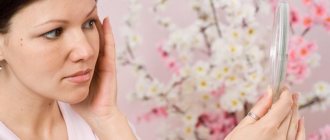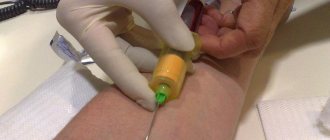Menstruation is a natural physiological process. The first periods appear in teenage girls aged 11-15 years. Less commonly, menstruation is late or early. The first menstruation in girls aged 12 is normal. It is advisable that the girl undergo an annual examination by a gynecologist. This will allow timely detection of likely developing pathological processes. The first menstruation is different from subsequent ones. Menstruation is usually more scanty. At first, the menstrual cycle is disrupted. He will gradually recover without outside help. Usually the normalization process takes up to a year.
The first menstruation begins in adolescence
All about girls' first periods
Normally, it is believed that girls' first menstruation occurs between the ages of 11 and 14. This event is preceded by a long process of maturation of the female genital organs, the formation of the hormonal sphere and the formation of a real girl from a girl. Due to the heavy loads that the girl’s body experiences during this period, some deviations from the norm are possible. Irregular periods, prolonged menstruation and extremely painful periods are just a few of the problems that 80% of girls face in the first couple of years after the start of menstruation.
It is very important to understand that the first menstruation is evidence of the first ovulation. And although the girl will not be ready to become a mother for a long time after this, she can already become pregnant from her first menstruation. That is why, along with the rules of hygiene during menstruation, issues of sexual relations and contraception should be discussed.
Hormonal changes
The beginning of the female cycle involves the separation of the inner layer lining the uterus. The endometrium had been growing and thickening throughout the previous month. Its rejection begins if pregnancy does not occur.
The arrival of menstruation is controlled at the hormonal level. The central structure of the endocrine system, the hypothalamus, regulates another part of the brain. The pituitary gland secretes luteinizing and follicle-stimulating hormones. These substances affect the functioning of the ovaries, stimulating the production of estrogen and progesterone.
On the first day of your period, the pituitary gland is inactive. The concentration of sex hormones is minimal. The ovaries do not enter the active phase. During the menstrual cycle, the levels of these hormones will change.
How can you tell if a girl is getting her period for the first time?
Just as there are harbingers of childbirth, there are also harbingers of the first critical days. But this does not mean that menstruation will not occur without warning signs. Due to a busy schedule at this age, a girl (and this happens quite often) may simply miss a number of symptoms.
But in general, a week or two before the first menstruation, the daughter may complain of aching back pain and pain in the lower abdomen. But such complaints are not a cause for concern (of course, if the first menstruation begins soon).
The first period most often begins with a bloody smear. It usually lasts 1-2 days, and then turns into normal menstrual bleeding. After 5-8 days (maximum 10) from the start of the smear, the first menstruation passes. The onset of the next one depends on many factors, and can happen either a month after the first or after a longer period. The main thing is that no more than 5 months passed between the first menstruation and the next one.
The time of onset and duration of the first menstruation is very individual. They are influenced by nutrition, lifestyle, and genetic predisposition. But I strongly recommend, despite the variability of girls’ first periods, to consult a doctor in the following cases:
- the duration of critical days is more than 10 days;
- long gap between menstruation (more than 4-5 months);
- severe pain during menstruation;
- absence of menstruation in girls over 14 years of age;
- no regular cycle 1.5 years after the first menstruation.
All of the above symptoms are not accurate signs of the presence of pathology in the girl’s body. But in order not to miss the disease at the age of 12. And after 10 years, do not treat infertility, if there is the slightest suspicion of a deviation from the norm, a consultation with a doctor is recommended. To do this, you can contact a pediatric gynecologist or your therapist.
Question to the expert
I am the mother of two twin daughters. The girls' first periods (they are now 12 years old) were normal, but the second did not come. About 2 months have passed since their first menstruation.
Some irregularity in the first year after the start of menstruation is normal. It is likely that the endometrium of children's uteruses has not yet grown enough for menstruation to occur.
Recommendations
Doctors' recommendations:
- Women who have brown periods should consult a specialist. If the cause is identified, he will be able to give detailed recommendations regarding further management and monitoring of the woman.
- You should monitor the regularity of your periods. Any failures may have a pathological cause.
- Unprotected sexual intercourse should be avoided, especially with non-regular sexual partners.
- Get tested regularly for sexually transmitted infections, even if you currently have no symptoms.
- Periodically carry out instrumental examination of the pelvic organs using a common and non-invasive method that is highly accurate.
- In the presence of chronic inflammatory processes, accompanied by the appearance of brown menstruation, full treatment is required, followed by anti-relapse therapy, as well as rehabilitation courses and compliance with preventive measures.
- Approach responsibly when planning the birth of a child, as well as avoid stressful situations, heavy physical activity and harmful environmental factors.
- Monitor your work and rest schedule, as well as adequate nutrition.
Let's talk about normal blood loss and the duration of the first menstruation
Normal blood loss during menstruation is 50-70 ml, which is equal to approximately 2-4 tablespoons. Due to the small size of the uterus in girls aged 12 years, blood loss during the first menstruation can be as much as 30 ml (which can be regarded as spotting).
It is considered normal if the first menstruation lasts up to 10 days. Discharge that lasts longer than this period can be regarded as menstrual bleeding. Most often it is of dysfunctional origin. And according to modern protocols, the treatment of such bleeding is curettage of the uterine cavity (endometrial mucous layer). There are many negative opinions regarding this treatment tactic, so it is not recommended for use if the duration of menstruation is only slightly longer than normal.
Question to the expert
Good afternoon, how long do girls’ periods last for the first time at 12 years old? Because I have already had my 8th day of menstruation, and it still doesn’t stop.
The first menstruation can normally last up to 10 days.
Treatment approaches for adolescents
If the menstrual cycle of a girl who has only started menstruating a year or two has gone wrong, this is a variant of the norm. An exception can be considered heavy uterine bleeding, which appeared after a delay. In case of frequent violations, inspection and additional examination are necessary. Often, disorders in adolescence are the first step to pathology of the reproductive system in adulthood.
Treatment for menstrual irregularities depends on the cause. If there is an anomaly in the development of the genital organs, then an operation is performed to dissect the hymen or vaginal plastic surgery.
Juvenile uterine bleeding is classified as dysfunctional. During reproductive age, the main treatment is curettage of the uterine lining. In adolescents, this method is used as a last resort, because injury to the uterus disrupts further reproductive function and can lead to miscarriage in the future. In girls, treatment is carried out using estrogen-gestagen drugs. More often these are combined oral contraceptives, which are taken several times a day according to a special regimen.
If tumors of the brain, adrenal glands or ovaries are diagnosed, the main method of treatment is surgical removal of the tumor.
Eating disorders are treated together with a psychotherapist or psychiatrist, depending on the severity of pathological changes in the psyche.
Cycle disruptions that occur against the background of endocrine pathologies require treatment of the underlying disease, which is treated together with an endocrinologist. We must also not forget that failures can occur not only with exhaustion, but also with obesity. Therefore, diet and sufficient physical activity are of great importance.
Hygiene during menstruation and sanitary pads for girls
Hygiene during menstruation is the first thing you should talk about with a girl at the age of 12 who has had her first period in her life. Providing pads and other hygiene products also falls on the shoulders of parents. Doctors recommend choosing the following remedies:
- pads for 4-5 drops on days 1-2 of menstruation and for the night;
- pads for 2-3 drops for daytime;
- It is worth giving preference to tampons only in certain cases when it is impossible to do without them;
- panty liners before the expected start of menstruation.
It is very important that the girl remembers that the pad needs to be changed approximately every 1.5-2 hours. After each change, you need to wash yourself with warm water from the urethra to the anus (but not vice versa). During critical periods, it is better to avoid hot baths and visiting the swimming pool.
Question to the expert
Hello, can you tell me how to tell my mom that I started getting my period when I was 12 years old? It seems to me that this happened very early and that there is something wrong with me.
12 years is the optimal age for the first menstruation. Your mother should be able to handle such an event normally and with understanding. You can also discuss with her which pads are best to use during your menstrual period. Also, do not hesitate to talk to your loved ones about contraceptive methods to be educated on these issues.
What are the reasons for brown discharge?
Let's talk about those cases when brown discharge before the onset of menstruation is caused by pathologies. We are talking about the following:
Inflammatory processes in the vagina. Usually the discharge is light brown in color and is often accompanied by an increase in temperature and a feeling of fullness, pain and itching. Characteristic of thrush. as well as gonorrhea, microflora imbalance, and a number of other infectious diseases; Endometritis, both chronic and acute, can manifest itself in a variety of discharges. The latter may become more noticeable before the onset of menstruation; Diseases of the cervix. Brown discharge may be combined with pinkish discharge
They often appear after sex, but not all women are able to immediately pay attention to it. Many are too relaxed, and representatives of the fair sex often go into the shower after the act, so any discharge is washed off; These symptoms cannot be ignored, since they may indicate both cervical erosion and cancer; When conducting an active sexual life, discharge accompanied by itching, burning, dryness in the vagina may indicate infection transmitted from a sexual partner
Taking tests will help you check your guesses and also identify the specific pathogen. We remind you that this can be done in most modern anonymous centers completely free of charge;
Brown discharge instead of menstruation during pregnancy can be one of the characteristic manifestations of a successful conception. Scientifically, this is called implantation bleeding; In some cases, such discharge may indicate the presence of an endometrial polyp; Salpingitis or inflammation of the fallopian tubes. The clinical picture is also complemented by nagging pain in the lower abdomen and periodic chills. Appetite noticeably decreases, severe fatigue appears, and rather unpleasant sensations occur when urinating.
What to do if instead of menstruation there is brown discharge?
Brown spotting instead of menstruation directly depends on whether a woman is sexually active or not. In the first case, such symptoms may be a sign of serious infectious diseases that are sexually transmitted. This is also evidence of pregnancy.
In the absence of sexual activity, one of the pathologies of the uterus, already mentioned in the reasons for the appearance of the corresponding discharge, can be suspected. In addition, an ovarian cyst can lead to a similar condition. Sometimes polycystic disease manifests itself this way.
Sometimes these discharges indicate the onset of early menopause. The normal period for the onset of menopause is after forty-five years. Around 30, early menopause may occur. caused by a serious lack of nutrients in youth, illness, severe hormonal imbalances, pathologies of puberty, deep stress experienced, and other reasons. Modern medicine makes it possible to delay the premature onset of menopause with timely treatment.
Daily routine and what girls should not do during menstruation
During this period, girls usually lead an active lifestyle. They attend school, several clubs and even tutors. Of course, during menstruation, they, like many women, may not want to exercise in the same intense mode. And if officially in European countries PMS is considered a diagnosis on the basis of which one can receive a sick leave, then it would probably be cruel to force your daughter to live as usual, attend difficult training sessions and be very physically overexerted. A girl should not be afraid to tell her mother that she has started menstruating, and this requires a high degree of trust between mother and child.
Regarding the daily routine, it is better to offer your daughter gentle exercise, as well as adequate pain relief for her pain. In general, the same pharmacological agents that her mother uses are suitable for the girl. The only thing is to make sure that the child is not allergic to the chosen drug.
Question to the expert
Hello, I'm 12 years old and I don't have my period. How can I induce my first period at home?
At 12 years old, missing your period is not a cause for concern. Most likely, the preparatory stages are still taking place in your body. Therefore, you should never try to induce menstruation at home on your own. This can cause enormous harm to your health and even result in infertility.
Types of menstrual irregularities
A disruption in the menstrual cycle in teenage girls may involve changes in various characteristics of menstruation.
Changes over time:
- primary amenorrhea – absence of menstruation over the age of 15 years;
- secondary amenorrhea is the absence of menstruation for 4-6 months after an existing menstruation.
- oligomenorrhea - rare menstruation, more than 35 days pass between them;
- polymenorrhea - frequent periods with less than 25 days between them.
Change in bleeding strength:
- hypermenorrhea - heavy bleeding;
- hypomenorrhea – scanty blood flow;
- juvenile bleeding.
Disturbance of sensations:
- dysmenorrhea - prolonged, heavy and painful menstruation;
- algomenorrhea - painful monthly bleeding.










